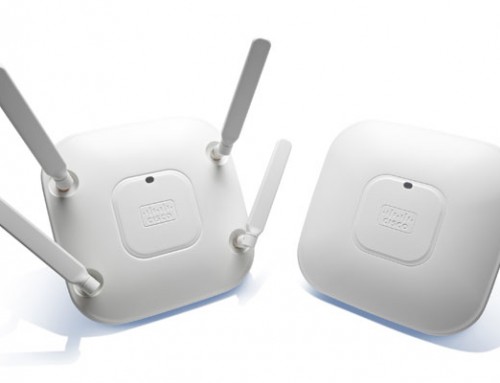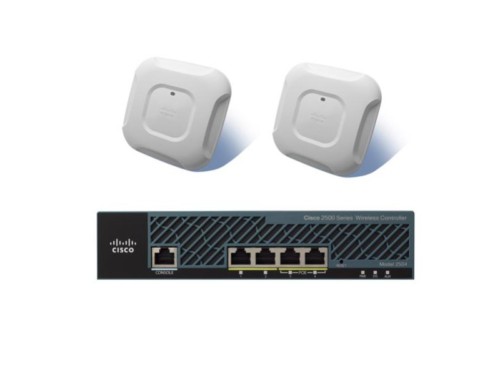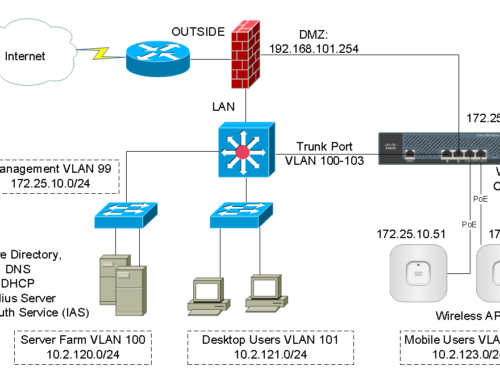Wireless network technology keeps evolving. With the latest 802.11ac Wave 2, Gigabit wireless across your network isn’t something out of reach. It is not a new concept but it has become real since the wireless network throughput matches or even surpassed wired Gigabit Ethernet. Small branch office and home office users started thinking about, wouldn’t be cool building a robust and scalable network completely on wireless? It not only saves the hassle of drilling holes in the wall, more importantly it saves tremendous cost and effort. In this session, I’ll demonstrate small branch home office wireless design using Cisco’s Unified Wireless System.
We’ll take a look at different deployment options across different network architecture. And make recommendations for each scenario based on typical environment. First of all –
Why you shouldn’t be running Standalone APs (even you only have one)
Standalone APs are also called Autonomous Mode in Cisco’s term. As opposed to the Lightweight Controller based wireless AP, autonomous APs are configured individually, managed individually and work individually. To learn more about its operation modes, check out my previous session how to convert one mode to the other. Converting Cisco Wireless Access Point from Lightweight Mode to Autonomous Mode and Vice Versa
With the new release of Aironet 1800 series APs, you can completely eliminate the need of physical Wireless LAN Controller (WLC) to run in LWAPP or CAPWAP mode. For a small branch office or home network, Cisco Mobility Express can be a perfect solution. Here are some highlights of the benefits.
- Build a Controller-based wireless system with or without physical / virtual Controller
- Aironet 1850 and 1830 come with embedded WLC, 802.11ac Wave 2-compatible
- Support up to 25 APs and up to 500 wireless clients (good for most small businesses)
- Fast setup- Cisco claims you can have a wireless network up and running in 10 minutes
As you can see, even if you wanted to start small where only one AP is needed, you can still get an Aironet 1850 or 1830 with controller functions built-in. Whether you grow to adding more APs or stay with one, the controller based system gives you greater scalability and flexibility overall.
Please note that the 1850/1830 series do have limitations according to Cisco’s wireless release note for 8.1.131. Here is the abstract of it.
Features Not Supported on Cisco Aironet 1830 and 1850 APs
- Mesh mode
- Flex mode
- Monitor mode
- Sniffer mode
- Workgroup Bridge (WGB) mode
- OfficeExtend mode
- Enhanced Local Mode (ELM)
- Integrated BLE
- Basic spectrum analysis
- USB-based Bluetooth Low Energy (BLE) device support
- Cisco CleanAir
- Cisco Wireless ClientLink 3.0
- Rogue Location Discovery Protocol (RLDP)
- Cisco Compatible eXtensions (CCX) Specification
- 1x supplicant for AP authentication on the wired port
- Static WEP key for TKIP or CKIP
- Dynamic Transmit Power Control (DTPC)
- Federal Information Processing Standard (FIPS) and Common Criteria
- 40-MHz Rogue detection
- Native IPv6
Small Branch Home Office Wireless Design
Let’s see what deployment options we have.
Wireless Deployment Options
Depending on your network size and number of wireless clients, there are four common design and deployment options to choose from.
Design A: Cisco Mobility Express
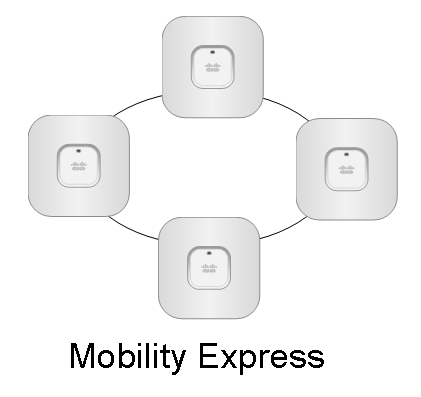
Controller function runs on an Access Point. Supported by the new 802.11ac Wave 2 Aironet 1830 and 1850 series.
Low cost, low IT footprint, no rack equipment (switches, physical WLC). Enterprise grade wireless system, Maximum 25 APs and up to 500 wireless clients
Best for: small branch office, home network, single site with multiple offices
Design B: Flex Connect
Flex Connect also known as HREAP by the old timers, it allows data traffic to be switched locally and not go back to the controller. It basically causes the AP to behave like an autonomous AP, but be managed by the WLC. In this mode, the AP can still function even if it loses connection with the controller.
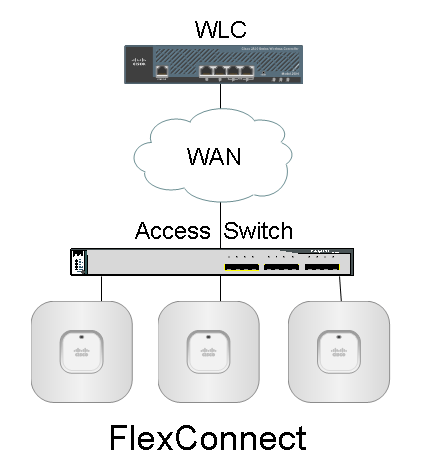
Best for: businesses with several small branch offices with limited Internet bandwidth, no redundant and robust links to central office. IT manager still wants to manage the entire wireless system centrally with consistent SSID setup and roaming between offices.
Design C: Converged
Converged access brings wired and wireless networks together. Wireless Controller functions are integrated into the access switch level. Supported on the 3650/3850/Sup 8E switches.
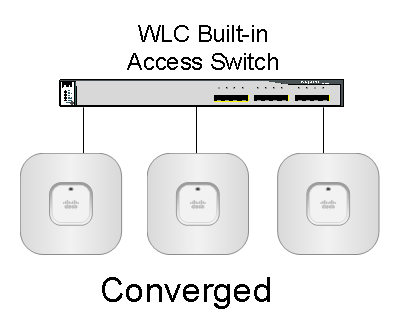
Simplified wireless design for campus and branch office. No additional controller hardware required. Consistent between wired and wireless.
Best for: small campus, medium sized branch with wired and wireless network
Design D: Centralized
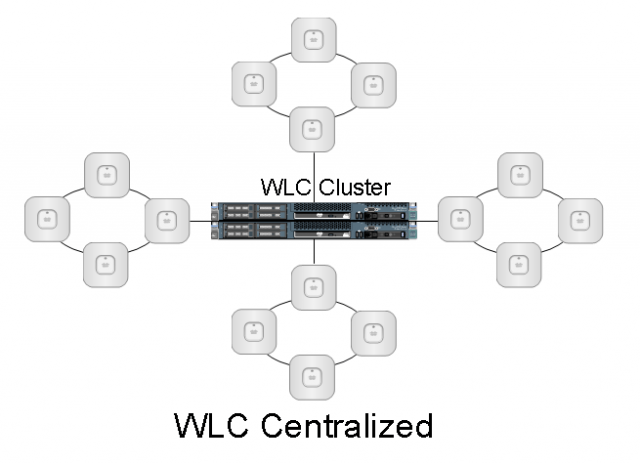
For large and distributed enterprise and campus environment, centralized controller based wireless system is recommended. Each location has robust and redundant MPLS/VPN connectivity to central datacenter. Control traffic and data traffic are sent to the central datacenter for security enforcement.
Best for: large implementation, medium sized sites connected with high speed and redundant links.
How is your wireless system setup? If you were asked to upgrade the existing wireless network or build a new one from ground up, which deployment option would you pick? Let me know in the comment session and I want to know your thoughts.

